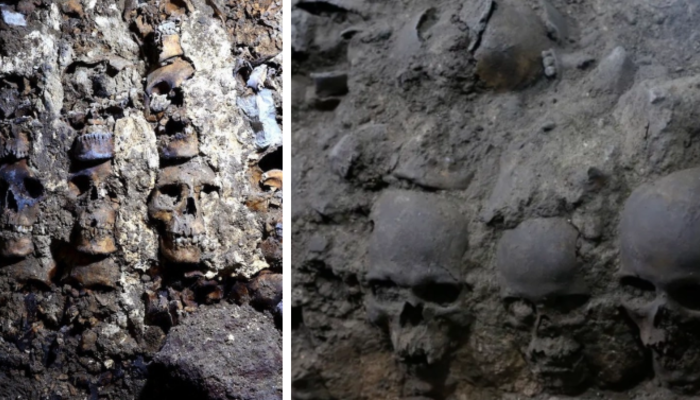Last week, Mexico’s National Institute of Anthropology and History (INAH) announced a remarkable discovery. Researchers uncovered a section of a skull tower under the ruins of Mexico City’s Templo Mayor. This newly found section contained 119 skulls from men, women, and children.
The tower, known as Huei Tzompantli, was first discovered five years ago, with the skulls dating back over 500 years. The latest discovery brings the total number of skulls in the tower to 484, according to INAH.
In March, archaeologists discovered this new set of skulls buried more than 10 feet beneath the streets of Mexico City, which was built on top of the Aztec capital, Mexico-Tenochtitlán.
Alejandra Frausto Guerrero, Mexico City’s culture secretary, described Huei Tzompantli as “one of the most impressive archaeological finds of recent years in our country,” highlighting the discovery’s importance in showcasing the power and greatness of Mexico-Tenochtitlán.

Archaeologists believe the tower, built between 1486 and 1502, was part of a temple dedicated to Huitzilopochtli, the Aztec god of war and human sacrifice. Measuring over 16 feet wide, the tower consists of rows of skulls impaled on wooden poles, forming the walls of the structure. All the skulls face inward toward the hollow center of the tzompantli.
Originally, the researchers expected the skulls to belong to male warriors, but they were surprised to find the remains of women and at least three children among them. Raúl Barrera Rodríguez, head of INAH’s Urban Archaeology Program, mentioned that while they couldn’t confirm how many were warriors, some may have been captives destined for sacrifice.
According to Barrera, skull towers like this one were declarations of power by the Aztecs, who sacrificed prisoners of war to their gods and displayed their skulls as a symbol of their empire’s might. The Aztecs believed these sacrifices, known as “nextlahualli” or “payment of debts,” ensured the survival of their gods and the continued turning of the world.
Barrera added that human sacrifice in Mesoamerica was seen as a way to renew nature and maintain the continuity of life.